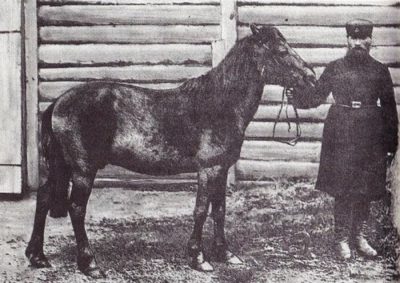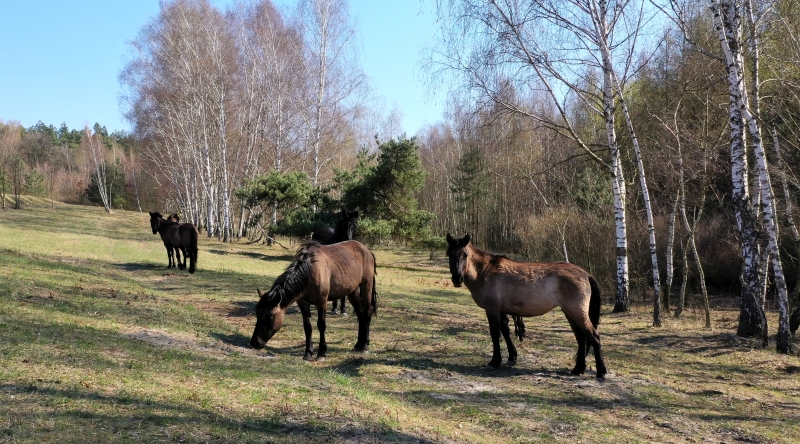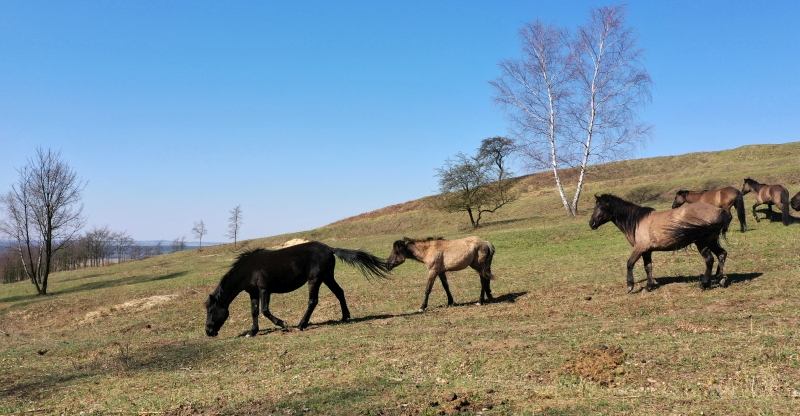Polish primitive horses in Wierciszów
Polish primitive horses are the only indigenous, primitive breed of horses originating from wild ancestors called tarpans, which until the end of the 18th century were found on the Polish-Lithuanian borderland. The last wild tarpan was killed in 1879 in southern Ukraine, the last representative of the breed in captivity died in 1887.

The only known photograph of a living tarpan, taken at the end of the 19th century at the Moscow Zoo.
These animals lived in groups of several dozen specimens, each group was led by the strongest male. They were strong, sturdy horses, resistant to disease and low temperatures. Despite their small height, they were fast and agile and were able to defend themselves effectively against predators. The tarpans were often captured and then tamed and used e.g. in agriculture. By cross-breeding them with domestic horses, peasants unknowingly contributed to the creation of a primitive breed called Polish primitive horses.
The most typical features of Polish primitive horses are considered:
– small height (average specimen at the withers reaches 145cm),
– long lush foretop and tail,
– mousy coat, with a dark bar running through the back,
– high resistance to adverse conditions and poor quality of feed,
– high fertility.
This breed is still considered to be in danger of extinction, which is why ZŚiNPK became interested in their breeding. These friendly, intelligent and, when it is necessary, brave half-wild animals are used as “live mowers” to protect one of the most valuable natural sites in Ponidzie. The horses stay in the habitat all year round. In Autumn and Winter, during rain or heat, they can hide in a specially set up shelter. ZŚiNPK employees observe the herd but intervene only in important cases, providing water and properly balanced feed where necessary. The herd which is taken care of by ZŚiNPK has 9 specimens and already 2 foals were born here.















